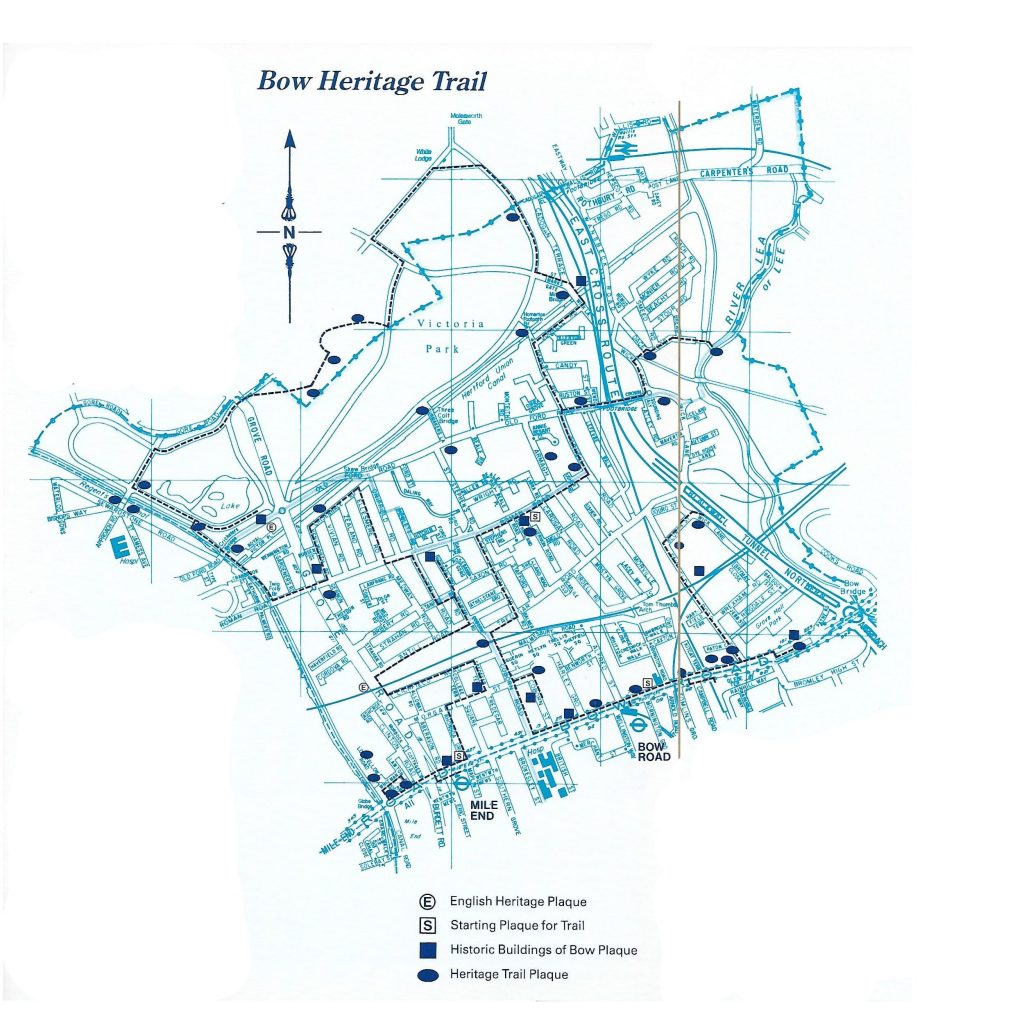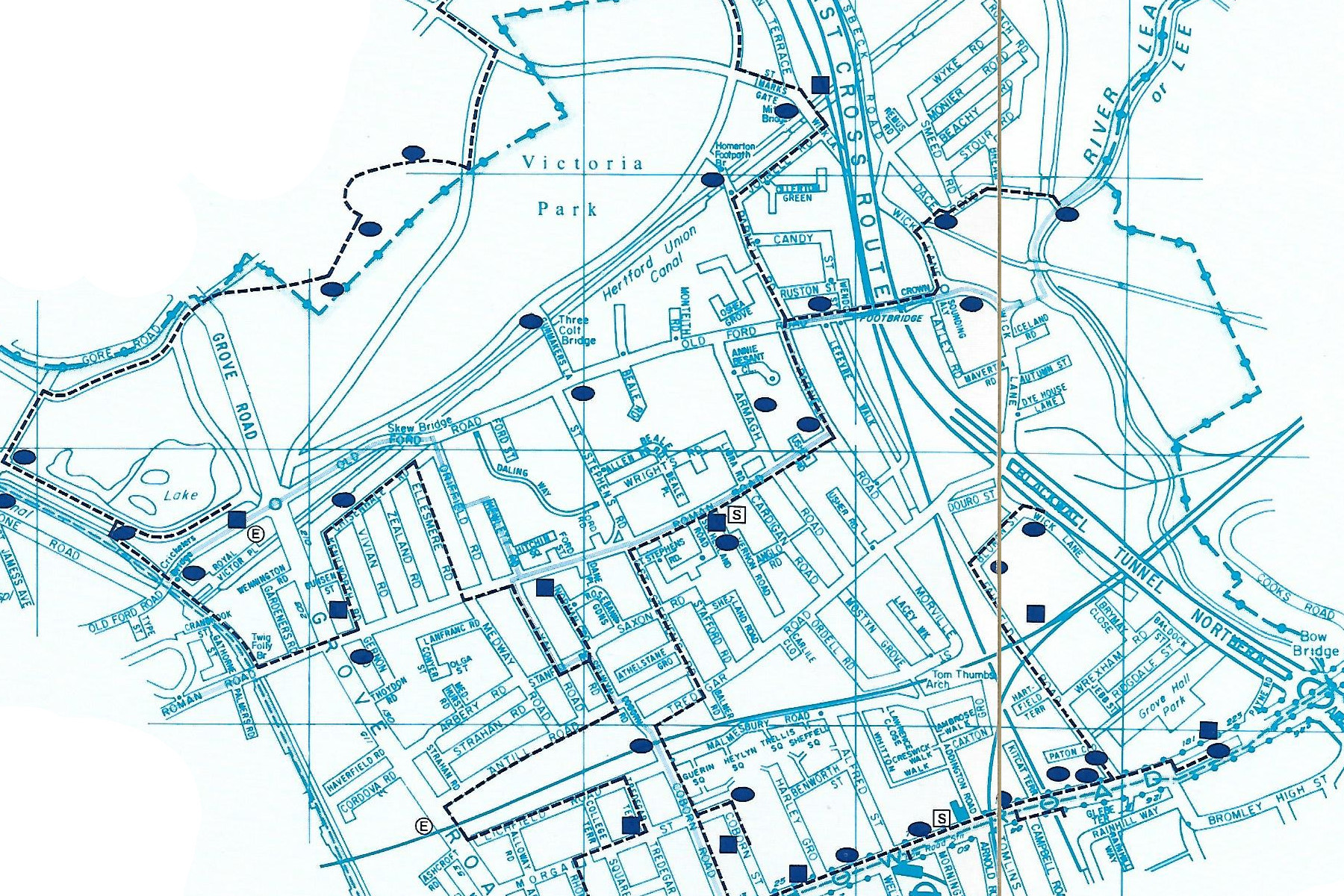On the trail of the Bow Heritage Trail
If you’ve been in Bow for any amount of time you’ll have noticed the place is peppered with plaques. These faded regal blue and gold signs are marks of the Bow Heritage Trail, a patchwork of historical sites that span from Victoria Park to Bow Road, from Regent’s Canal to the River Lea.
The plaques are a familiar site, but the route itself is something of a mystery. More by accident than design the Roman Road LDN found itself on the trail of the Bow Heritage Trail. After a trip to the Tower Hamlets Local History Library and Archives and a fair bit of aimless wandering, the pieces started to come together.
The Bow Heritage Trail is approaching its 30th birthday. It was established in 1990 by Bow Neighbourhood, which was then the local arm of Tower Hamlets Borough Council. The project brands Bow’s major historical sites and tries to organise them into a linear route.
Research for the trail was led by local historian Joseph Waters. Waters was born in Poplar in 1925 and lived in the East End his whole life. An active member of the East London History Society (which continues to this day), Waters died in 1995.
Picking up a scent
The only details of the trail currently online are in this repurposed pamphlet produced by Idea Store. Inquiries into the pamphlet’s source led to Tower Hamlets Archives, where it transpired that pristine physical copies of the original 1990 pamphlet still existed.
Abigail Williams, heritage coordinator at the archives, kindly allowed us to keep one of these originals. It has now been converted into a PDF document (viewable here) for anyone to access and use as they please.
The pamphlet provides an overview of the Heritage Trail’s top locations. It also includes a detailed map showing the trail route and the sites along it. We have (crudely, it must be said) stitched the map together to work online as a standalone resource:

The Trail has three designated starting points — Bow Police Station, Besso House, and Gladstone Place on Roman Road (now the Idea Store). The pamphlet, starting out from the police station and guiding the reader through a fraction of the complete route, serves as a kind of teaser. It estimates that the full route would take about six hours to walk. The six-page document closes as follows:
This is but a brief introduction to the Heritage Trail; there are many more plaques to be seen, and many more interesting facts of the Neighbourhood’s history to be discovered.
That sounded like a challenge.
Down the rabbit hole
In piecing together a provisional list of Heritage Trail sites plenty of the usual suspects showed up — Bow Church, the Bryant and May factory, Chisenhale Works — but so too did dozens of threads that beg to be pulled.
A Narnia-like stone doorway that once fronted Coborn Road Railway Station; a suffragette toy industry; the residence of James Warren, whose truss patent made some of America’s mightiest bridges possible. All these and more were researched and marked by Joseph Waters.
What’s more, in looking for plaques one inevitably stumbles across sites and stories that didn’t make the cut — John Kidd & Co’s factory on Fish Island, which supplied Fleet Street with ink for almost a century, or the statue of William Gladstone, whose hands have been stained red for over 150 years.
A marathon, not a sprint
There is much of the Bow Heritage Trail to discover, but this is at least a first step. Scraps can be found online — in pamphlets, obituaries, and heritage projects — but the Bow Heritage Trail is a project that deserves to be centralised and made widely accessible to all.
This will be an ongoing project for the new year. Bow Heritage Trail sited will be researched and documented, the stories behind them unfurled and hopefully done justice. We may even get a little big for our boots and add a few ourselves.
If you liked this piece you may enjoy our article about Sylvia Pankhurst’s Toy Factory



I too have one of the blue and gold Bow Heritage Trail leaflets from circa 1990. It isn’t in pristine condition – lots of holes from drawing pins – but if anyone needs one to add to an archive somewhere, then let me know.